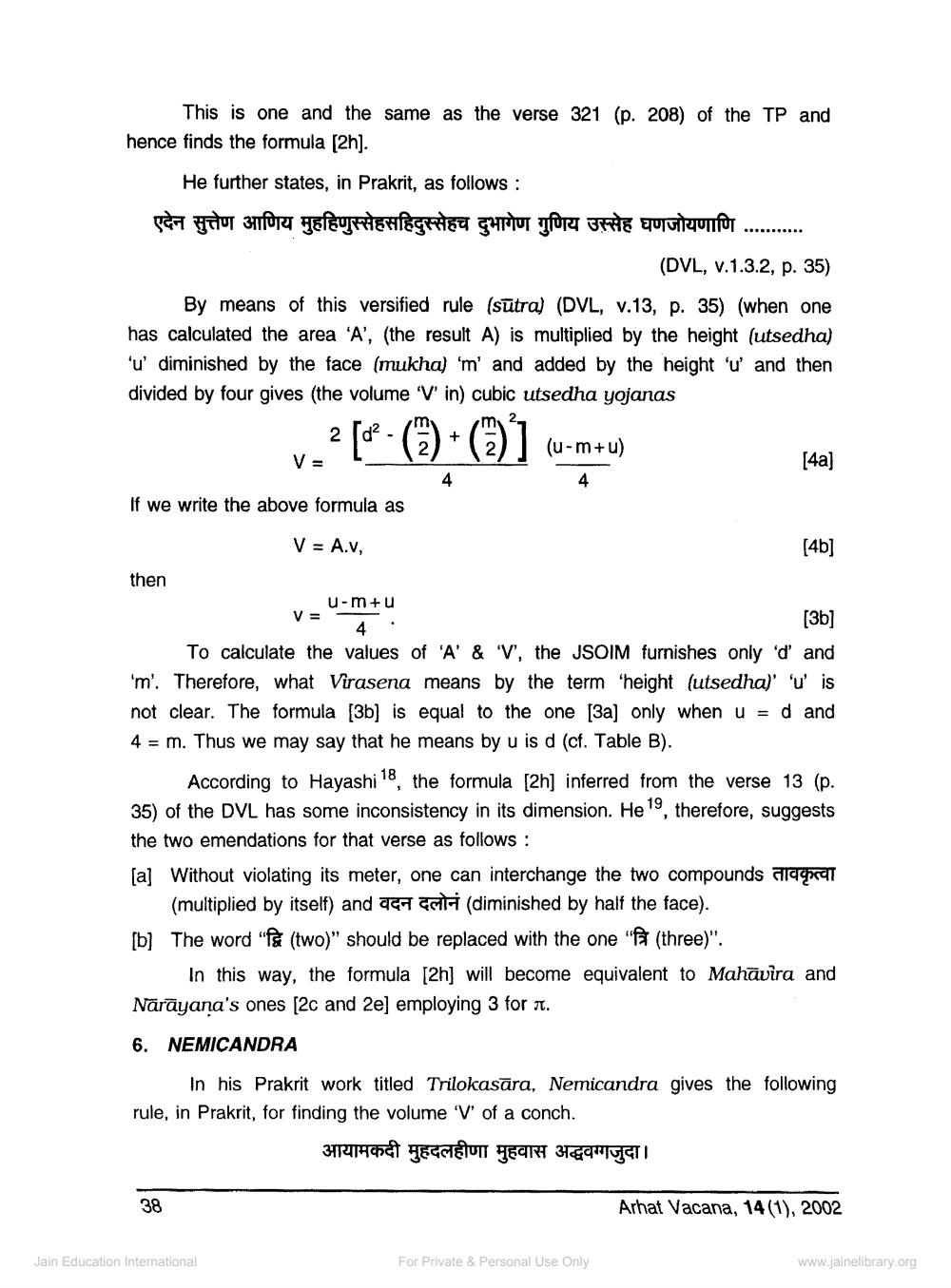________________
This is one and the same as the verse 321 (p. 208) of the TP and hence finds the formula (2h).
He further states, in Prakrit, as follows: एदेन सुत्तेण आणिय मुहहिणुस्सेहसहिदुस्सेहच दुभागेण गुणिय उस्सेह घणजोयणाणि .........
(DVL, V.1.3.2, p. 35) By means of this versified rule (sütra) (DVL, v.13, p. 35) (when one has calculated the area 'A', (the result A) is multiplied by the height (utsedha) 'u' diminished by the face (mukha) 'm' and added by the height 'u' and then divided by four gives (the volume 'V' in cubic utsedha yojanas
2 d) + (2)
(u-m+u)
V =
[4a]
If we write the above formula as
V = A.v,
[45]
then
V=
U- mu
[3b] To calculate the values of 'A' & 'V', the JSOIM furnishes only 'd' and 'm'. Therefore, what Virasena means by the term 'height (utsedha)' 'u' is not clear. The formula (3b) is equal to the one [3a] only when u = d and 4 = m. Thus we may say that he means by u is d (cf. Table B).
According to Hayashi 18, the formula [2h) inferred from the verse 13 (p. 35) of the DVL has some inconsistency in its dimension. He 19, therefore, suggests the two emendations for that verse as follows : [a] Without violating its meter, one can interchange the two compounds arachat
(multiplied by itself) and a Go (diminished by half the face). [b] The word "Bg (two)" should be replaced with the one " (three)".
In this way, the formula [21] will become equivalent to Mahavira and Närāyana's ones (2c and 2e) employing 3 for it.
6. NEMICANDRA
In his Prakrit work titled Trilokasāra, Nemicandra gives the following rule, in Prakrit, for finding the volume 'V' of a conch.
आयामकदी मुहदलहीणा मुहवास अद्धवग्गजुदा।
38
Arhat Vacana, 14(1), 2002
Jain Education International
For Private & Personal Use Only
www.jainelibrary.org




